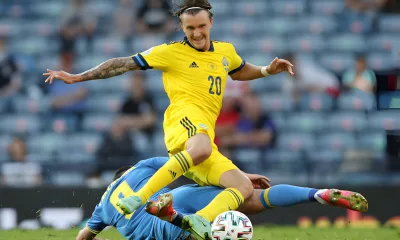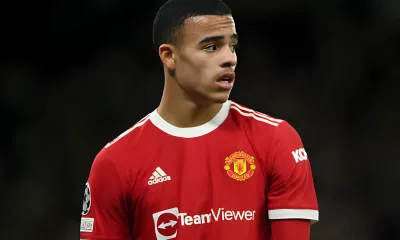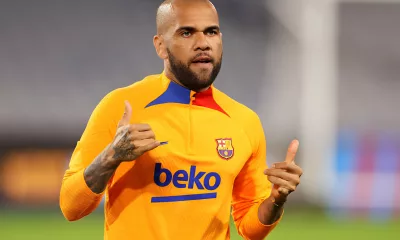
It was 40 years ago when Czechoslovakian Antonin Panenka added his own signature to the penalty kick. At 4-3 for the Czechs in the midst of penalty-shootout in the European Championship final of 1976, Panenka feigned a shot before he gently chipped the ball into the centre of the goal as goalkeeper Sepp Maier dived into the corner. No one had ever seen such a shot before. One journalist remarked that Panenka was a ‘poet’. Pele called him ‘a madman or a genius.’
The appeal of what Antonin Panenka had done carried into every penalty kick taken in a similar fashion from there on. It came to be known as the ‘panenka penalty kick.’
Its birth came from a simple bet between Panenka and his Bohemians FC teammate, goalkeeper Zdenek Hruska. The two bet beer and chocolate on how many penalties Panenka could score. Hruska’s abilities as a goalkeeper must have cost Panenka a lot because a few sleepless nights later, the panenka penalty kick was born, and along with it, all the riches of beer and chocolate Panenka himself could take.
The technique has had its emulators and admirers to various degrees of success since then. It has claimed the heads of technical players such as Robin van Persie, Neymar, Antonio Cassano, and Alexandre Pato. Those who have succeeded also possessed a layer of steeliness to their character.
It was in the panenka’s breeding ground, the penalty-shootout, when Andrea Pirlo executed a panenka in the quarter final between England and Italy in Euro 2012.
In contrast to Panenka himself who had trained the shot in training before, Pirlo’s execution was purely intuitive. Explaining the process he went through taking that penalty, Pirlo later said: “I made my decision right at the last second, when I saw Joe Hart doing all sorts on the line. It was all impromptu, not premeditated. The only way I could see pushing my chances of scoring close to 100%. There was absolutely no showboating about it–that’s not my style.”
The panenka has not escaped the football repertoire of another football magician, Zinedine Zidane. Six minutes into a World Cup match against Italy, he did this:
Zidane commented later in his career, “I never lost my head as a player, and I will never do so as a coach.” His panenka against Italy was the highest example of keeping his composure. Unfortunately, it came hand in hand with one of his most controversial career moments–his clash with Marco Materrazzi.
But if Zidane’s coolness in the former can be compared to the North Pole, Alexis Sanchez’s panenka penalty kick against Burnley deep into injury time, acquired interstellar space temperature. In spite of the positive outcome, Arsene Wenger later moaned that Sanchez’s goal was ‘too cool’; meaning to say it was too risky. Such is the characteristic of the panenka. It plays on the nerves.
It wasn’t Sanchez’s first panenka either. In 2015, he gifted Chile with their first Copa America triumph ever with a similar cheeky execution in a crucial penalty.
Then there were those who fell on the ‘crazy’ side of Pele’s evaluation. Such was the case with Uruguayan Sebastian Abreu, who was also suitably nicknamed El Loco. He was a serial ‘panenker-er’.
When he did his first one in the World Cup in South Africa against Ghana, he was asked how he would describe Zidane’s penalty kick against Italy from four years before. He compared himself with Zidane by replying: “Crazy? No, magical. So why not Abreu?” His love affair with the panenka resumed upon his return to South America when he netted two in the same match against Brazilian outfit Flamengo.
Then there were those who fell for the panenka’s technical charms. When Lionel Messi did a technically sublime version of it in a routine La Liga game against Getafe, it went viral on Youtube. Panenka himself later called it ‘the best I have ever seen.’
To conclude, the panenka shows an interesting psychological aspect of football. As much as penalties excite the fans, they test the players’ nerves because they are usually vital and unpredictable. Then, the miniscule details grow in importance as the players fight to keep focus in a flurry of questions: how long do I wait before I kick the ball; how will that affect the keeper; what’s his game; do I reveal where I will shoot early on; do I trick the keeper or focus on myself? For some it presents a purely practical path to the net; for others a trick they can use in their psychological stare-down with the keeper.
In that way, the choice of taking a panenka represents a self-inflicted rite of passage of sorts. The consequences of an ordinary penalty are tough enough as they are but the choice of taking a panenka penalty hides a double risk because of its outwardly ‘unserious’ character.
Panenka might have created a whole new style which he called “the easiest and simplest recipe for scoring a goal.”, but he overlooked the consequences of failing to score it. In that way, he was as mad as he was a genius.
Author


The Football Coach
How To Win Football Bets: A Betting Strategy To Help You Win Every Time

The Football Coach
How long is a football pitch? The complete pitch size guide













